On the occasion of its publication and the Automania exhibition, we asked Kimi Weart, author and illustrator of the newly published children’s book Cars! Cars! Cars!, to share some insights into how it came about.
How did you become a children’s book artist/writer/illustrator, and how does this project relate to other books you’ve worked on?
I was trained as a fine artist, though the first full-time job I took was as an assistant children’s book designer. I imagined it could be a wily back door to becoming an illustrator. But I discovered that illustrators are often told to change their art. So I chose the designer path for children’s books and made fine art as a separate practice.
In 2020 the curators of MoMA’s exhibition Automania asked me to help them brainstorm a book to accompany their show. The exhibition is about the artistry of cars and the obsession society has with them. They are “rolling sculptures,” yet also disastrous to the world.
Wonderfully, MoMA loved my proposal. I had also submitted an illustration in a fully designed layout because the story was dependent on these in order to include educational details about the cars. So this is my first project as the artist and designer and writer. It was more like getting to make one big piece of art than anything I’ve done before in the separate fields. I deeply thank the MoMA publications department for allowing me such free rein.
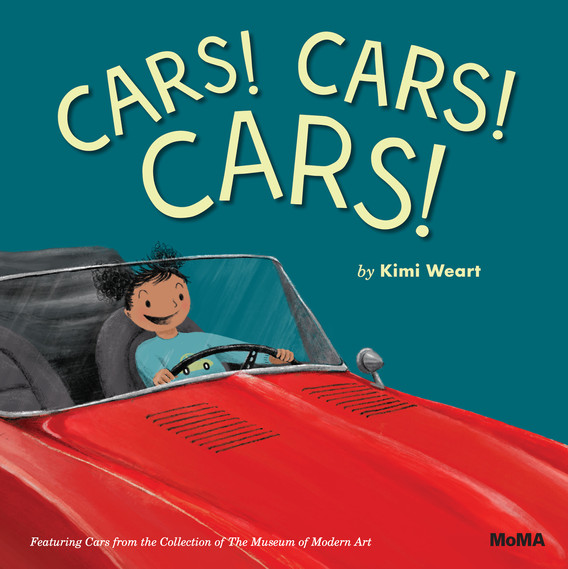
Cover of Cars! Cars! Cars!
Making this book was like attempting to mix shredded zucchini into chocolate muffin batter to trick kids into eating their vegetables.
Could you tell us a little bit about the process of making this book?
I wrote, illustrated, and designed simultaneously since everything was interdependent. Everything needed to be seamless in order to covertly insert some heavy, critical content while still making a charming book for car-loving kids. It was like attempting to mix shredded zucchini into chocolate muffin batter to trick kids into eating their vegetables.
For the art, I created hand-drawn sketches, which I then imported into the program ProCreate on the iPad, where I used the Apple Pencil digital stylus to create the final art. Making art digitally is a recent practice for me. In 2013, I developed essential tremor disorder—my hands shake a lot—and I stopped drawing and painting. Then two years ago I tried out the Apple Pencil and the world of art-making opened up again. “Undo” is magical.
Technology is often criticized as being a crutch but those critics often disregard people with disorders who need that scaffolding to realize their visions.
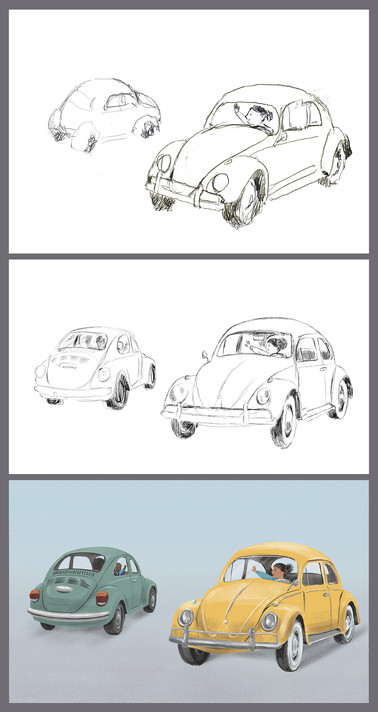
Preparatory sketch for Cars! Cars! Cars! by Kimi Weart
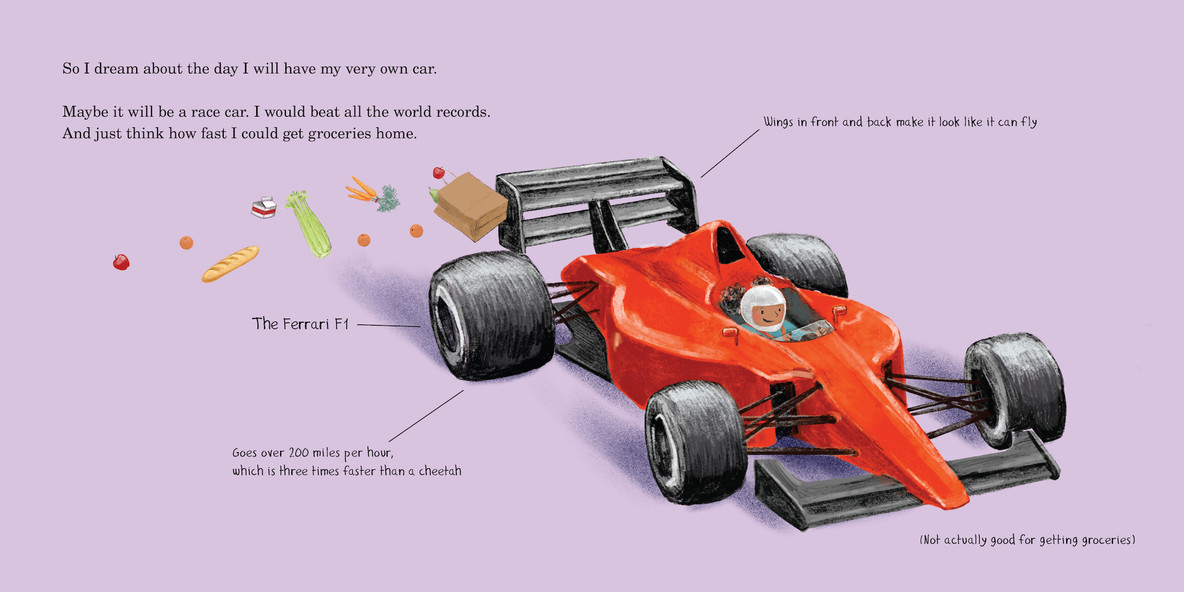
Spread from Cars! Cars! Cars!
How did you come up with the wonderfully car-obsessed main character, Rosario, and her way of thinking about cars?
When initially brainstorming the story, I recalled a friend’s son who adores cars. He memorizes facts about them, down to the granular level. Many kids become obsessed with mastering knowledge about automobiles, trains, dinosaurs etc., all noticeably larger than adults. It’s a way they can gain authority in a life of very little agency.
That is mirrored in society’s obsession with cars—the desire to feel powerful, in control, and free. To be “in the driver’s seat.” To be “behind the wheel” of your life.
At the heart of Rosario’s mania is the desire to be master of her own destiny. But she is also a modern child and is no dummy when it comes to admitting the problems of society’s need for more and more cars.
Were there any other books about cars that helped inform your own?
The catalogue for Automania was my linchpin. It is filled with provocative and inspiring essays on society’s complicated relationship with cars. I didn’t really look at other children’s books about the subject because those books are mostly celebratory.
But I did extensive image research to see how MoMA’s 10 models were constructed since I couldn’t view them in person at the time. Accuracy was very important to me. I almost despaired trying to find out how the front seats of the tiny 1968 Fiat 500 tilt forward to allow passengers access to the back. (Hours of research later, turns out it’s just a simple hinge.)
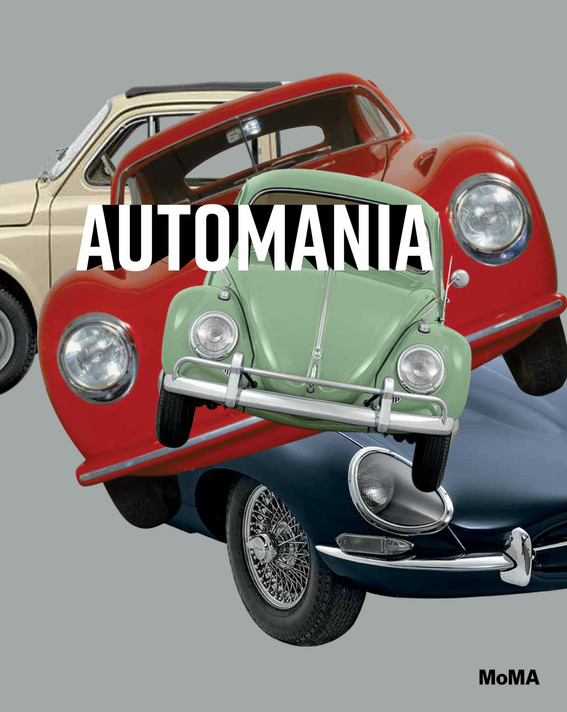
Cover of the Automania exhibition catalogue
What’s your first memory of a car?
When I was four my family went on a long road trip in our mustard Volvo station wagon. My cousin and baby brother took up the back seat, so the very, very back was made into a toy-filled nest just for me.
This was before the rules for buckling up and children’s seats. The back of that Volvo was my own domain. So from my earliest memories I myself identified cars with adventure and control.
What is your favorite car in MoMA’s collection?
The 1948 Cisitalia, a bright red two-door that is shiny as a lollipop. There were only 170 ever made, probably because every part of the body was hand-formed. It is the perfect intersection of art, design, and craft.
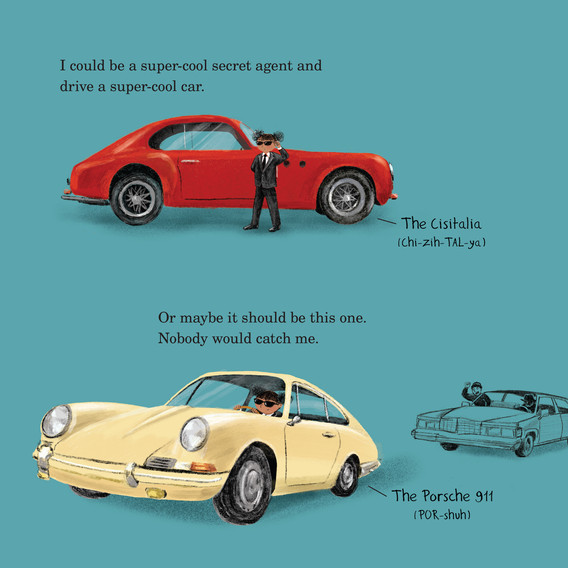
Page from Cars! Cars! Cars!
Considering the impact of cars on climate, what are your feelings about owning one?
I wish I was at a point where I could afford an electric car and the infrastructure for it. I wish I didn’t need a car at all. Because even electric ones use up natural resources for batteries and replacement parts. They are not a closed system!
And yet I can’t bring myself to not own a car. There is no way to reach the wild places of the world without one. But how can you do it without harming the environment? Better public transportation to the national parks is not the answer—the ever-growing number of visitors is already damaging these fragile ecosystems.
What do you do when the only answer is “Fewer people should want to be in nature”? Being alone in nature feeds my soul like church. I live in constant guilt and constant hope that someone will come up with a better solution.
Find out more about Cars! Cars! Cars! today.
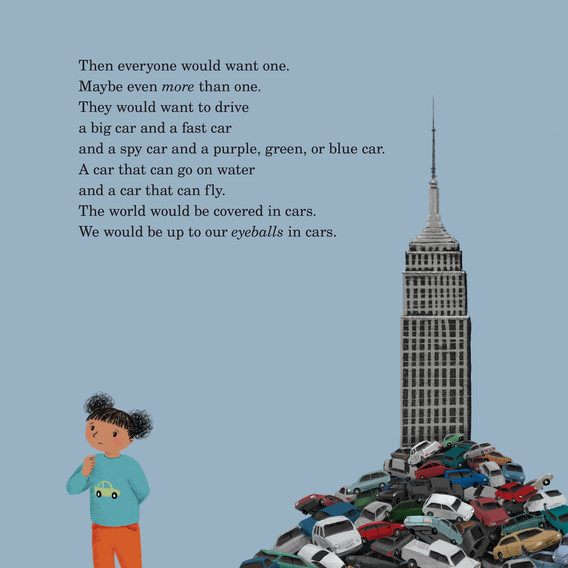
Page from Cars! Cars! Cars!
Follow @momadesignstore on Instagram to see author Kimi Weart read from Cars! Cars! Cars! in celebration of National Book Month on October 1.






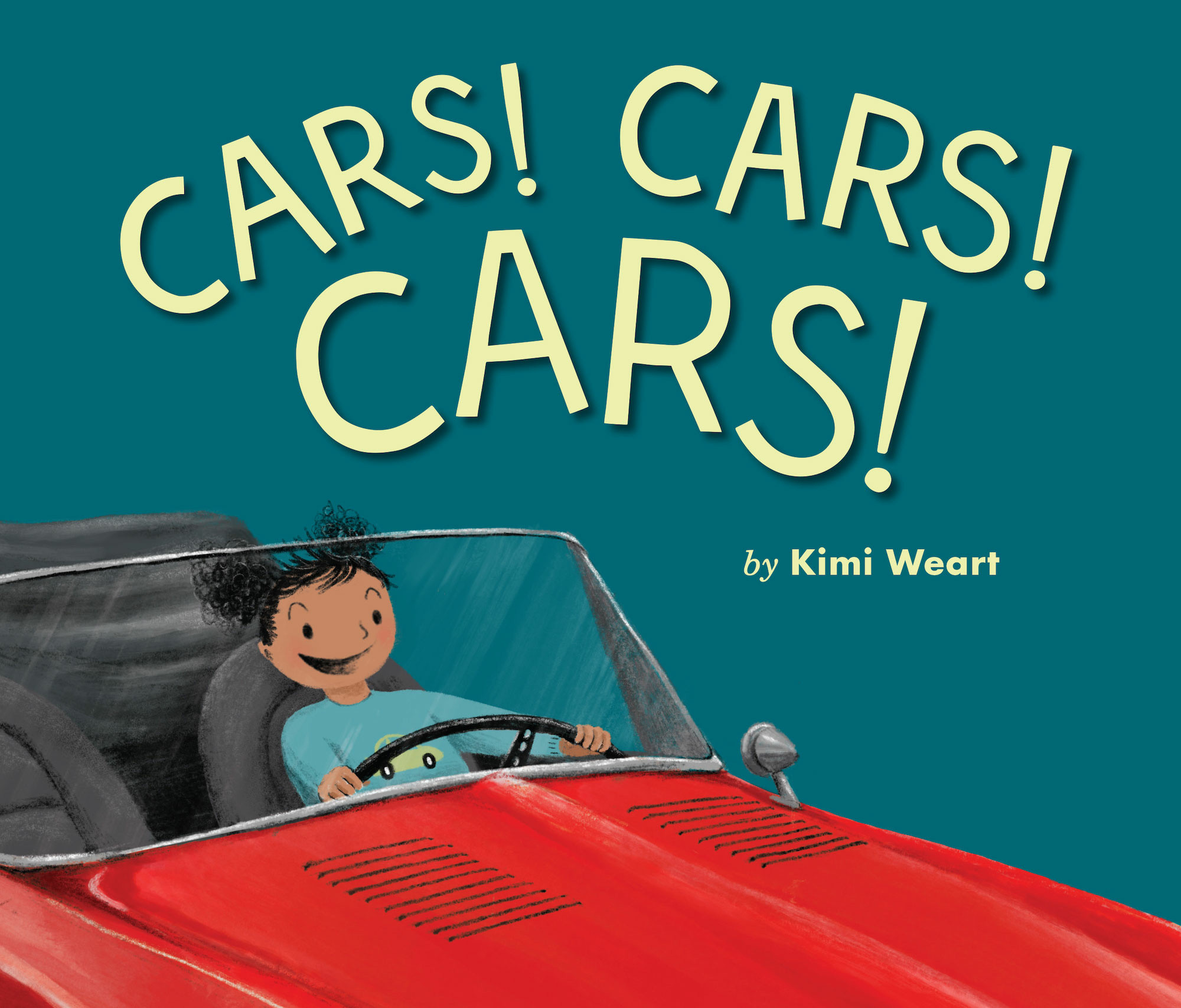
More Stories
Investigation launched into complaints of Tesla steering wheels coming off mid-drive | Tesla
Wheels Car of the Year 2023: Finalists revealed!
Why Were so Many Built?